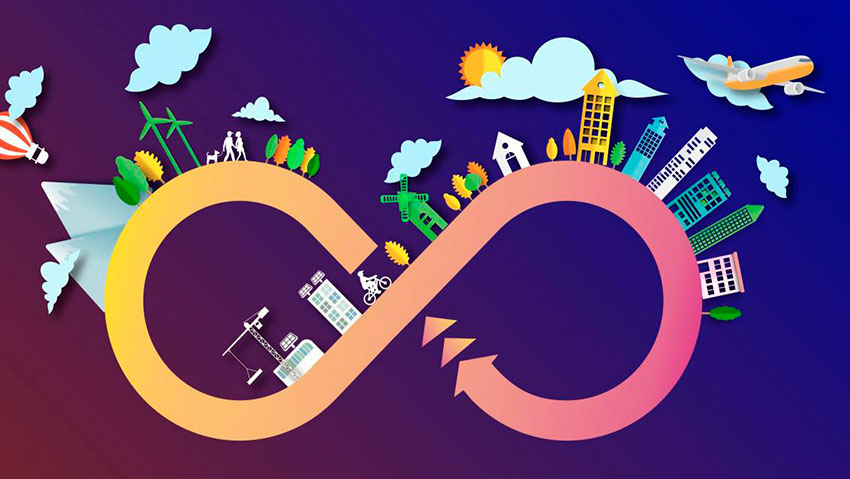
The digital divide and its impact on social inclusion and participation of Elderlies
.png)
The digital divide and its impact on social inclusion and participation of Elderlies
Currently, India is the second-largest Internet market in the world with more than 560 million internet users. However, there are significant differences in its use by age, socioeconomic status, gender, and regions of residence. In India, there would be more than 300 million senior people in 30 years and smartphones are currently being used by roughly 54% of people, but among them only 5% of people are over the age of 55. (Thakur & Édes, 2021)
The advent of covid-19 pandemic forced people to push their boundaries. The lockdown required people to come up with ways to stay connected with each other where people had to increase their dependency on virtual tools for food, grocery and even basic social interaction. And the senior citizen demographic was severely impaired due to technological gaps. The children stepped up at this point and assisted their parents and grandparents in establishing meaningful online connections by assisting them in utilizing online platforms like Zoom, Google Meet, Facebook Live, etc. With the introduction of Facetime, WhatsApp Video/Voice Calls, and Facebook Rooms for catching up with their kids, grandchildren, and friends, communication among seniors has also increased. The rapidly expanding older population in India is on its journey to feel less dependent, have more autonomy, and have higher self-worth thanks to greater acquaintance with digital tools. Hence, more attention needs to be paid to know how well-connected are the elderly to technology in the digital world.
The United Nations had chosen the subject "Digital Equity for All Ages" for 2021, reaffirming the need for older people to have access to and meaningful involvement in the digital world. The International Telecommunications Union also released the data that showed elderly people are more likely than other societal groups to encounter digital injustice; either they lack access to technology or frequently do not fully take advantage of the benefits that come with technological advancement.
Even among a group of older persons who use the internet, there is significant skill variance, which is related to people's education, money, and technology autonomy, or the flexibility to use the technology whenever and wherever one wishes. Undoubtedly, there are a lot of knowledgeable internet users over the age of 60 who would never forward a piece of "news" without first verifying its veracity. However, many members of the older generations either lack the expertise to make that call or have fallen behind. Although the majority of their frequently used applications and websites may be familiar to the elderly, their very quick and abrupt transition to all things digital puts them unquestionably at a higher risk of fraud. Financial planning specialist Dr. Y.K. Gupta has spoken about the importance of raising cyber risk awareness among senior citizens who are more likely to fall for phony calls or emails. In India, we learn about a variety of frauds involving the elderly because they are ignorant of such practices.
A well-written set of instructions is essential to remind older individuals how to use a new skill online, whether they are just learning how to log on to the internet or are more experienced users. To bridge this gap of digital divide, the IndiGive Foundation has started conducting FREE Cybersecurity Awareness workshops for the elderly. These workshops are designed to empower senior citizens against cyber threats and crimes, using a non-technical approach that’s easy to understand and engaging. The workshops are conducted in vernacular languages like Gujarati and Hindi and incorporates audio-visual elements to make the workshop more relatable and effective. These workshops provide an opportunity for elders to come together and share their experiences. The trained moderators address all their queries and questions to equip them better against the dangers of the internet.
We also understand the importance of data and statistics in this aspect, hence, we collect data from our participants to better understand their needs, requirements and issues regarding using technology and to be able to better cater to their needs. This data helps us to curate our workshops and programs as per the needs of the participants and provide tailored experience to elderly in our society.
References:
Johnson, M. (2021, February 8). Technology and older persons: Ageing in the digital era. ITU. Retrieved May 2, 2023, from https://www.itu.int/hub/2021/02/technology-and-older-persons-ageing-in-the-digital-era/
Nash, S. (n.d.). Older Adults and Technology: Moving Beyond the Stereotypes. Stanford Center on Longevity. Retrieved May 2, 2023, from https://longevity.stanford.edu/older-adults-and-technology-moving-beyond-the-stereotypes/
How India's Elderly Population Unleashes The Powers of New Age Technology. (2022, February 16). Sakshi Post. Retrieved May 2, 2023, from https://www.sakshipost.com/news/technology/how-indias-elderly-population-unleashes-powers-new-age-technology-151157
Thakur, B., & Édes, B. W. (2021, November 30). Helping India's elderly cross the digital divide as the country ages. Unravel.ink. Retrieved May 2, 2023, from https://unravel.ink/helping-indias-elderly-cross-the-digital-divide-as-the-country-ages/


.png)
.png)

Comments